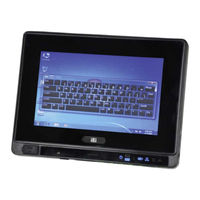IEI Technology AFL2-W07A-N26/R/2G-R10 Manuals
Manuals and User Guides for IEI Technology AFL2-W07A-N26/R/2G-R10. We have 1 IEI Technology AFL2-W07A-N26/R/2G-R10 manual available for free PDF download: User Manual
IEI Technology AFL2-W07A-N26/R/2G-R10 User Manual (195 pages)
Brand: IEI Technology
|
Category: Touch Panel
|
Size: 7 MB
Table of Contents
-
Introduction17
-
Features19
-
Front Panel19
-
Rear Panel22
-
Bottom Panel23
-
Dimensions28
-
Audio31
-
Unpacking33
-
Unpacking34
-
Packing List34
-
Installation37
-
Clear Cmos44
-
Overview60
-
Layout60
-
Removing the75
-
Bios Setup83
-
Introduction84
-
Using Setup84
-
Getting Help85
-
Main86
-
Advanced87
-
H/W Monitor97
-
I E I Feature100
-
Chipset101
-
Boot106
-
Security108
-
Save & Exit109
-
Software Drivers111
-
Bluetooth Driver136
-
Product Disposal146
-
Cleaning Tools147
-
Factory Restore177
-
Backup System178
-
Manual180
Advertisement
Advertisement
Related Products
- IEI Technology AFL2-W07A-N26
- IEI Technology AFL2-W07A-N26/R/2G-R12
- IEI Technology afl2-w15b-h61
- IEI Technology AFL2-W15A-N270
- IEI Technology AFL2-W19AB-H61 Series
- IEI Technology AFL2-W19A-H61-i5/R-R11
- IEI Technology AFL2-W19AB-H61-i3/R-R11
- IEI Technology AFL2-W19AB-H61-i3/PC-R11
- IEI Technology AFL2-W19A-H61-P/R-R11
- IEI Technology AFL2-W19A-H61-P/PC-R11
